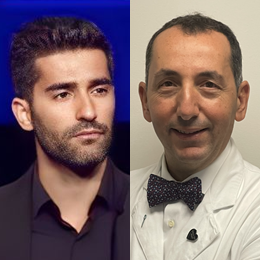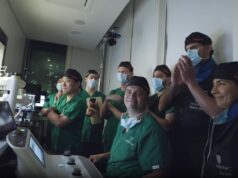
A systematic review and meta-analysis published recently in the Journal of NeuroInterventional Surgery has synthesised the existing data on intracranial aneurysm treatments utilising the novel Contour neurovascular system (Stryker), ultimately finding the device to be a safe and effective therapeutic option.
Study authors Ahmet Günkan (Istanbul, Turkey), Pascal Jabbour (Philadelphia, USA) et al initially posit that—while Contour has a “unique design” intended to address various aneurysm morphologies, including wide-necked, irregular and shallow-shaped lesions—evidence on the device’s clinical safety and efficacy “remains limited”.
“As this is a new device, there haven’t been big series or trials published,” Günkan said, speaking to NeuroNews. “That’s why an extensive review like this one is really important at this stage—to try to summarise the findings of all the small series published so far and to shed light on this new device, its efficacy, and its safety profile.”
The researchers therefore conducted a comprehensive search, guided by Preferred reporting items for systematic reviews and meta-analyses (PRISMA) standards, across three major repositories of medical research: PubMed, Embase and Web of Science. Their search included studies reporting on Contour device cases with a minimum of five patients.
Key efficacy outcomes considered in their analysis include rates of immediate and final follow-up adequate aneurysm occlusion, as well as technical success, while notable safety outcomes include ‘good’ functional outcomes (modified Rankin scale [mRS] 0–2) at final follow-up; procedure-related morbidity, measured via permanent neurological deficits; procedure-related mortality; and intraoperative and postoperative complications. Pooled analyses with 95% confidence intervals (CIs) were conducted, with heterogeneity assessed using I² statistics, and a random-effects model was applied, the authors relay.
Data from nine studies—including 483 patients (58.8% female; mean age, 59.3 years) with 484 aneurysms—were analysed, and the majority of patients in whom information on rupture status was available presented with unruptured (81.8%) as opposed to ruptured (18.2%) aneurysms.
Regarding their efficacy-related outcomes of interest, Günkan, Jabbour and colleagues report an immediate adequate aneurysm occlusion rate of 53% (95% CI, 1–100%), with the final follow-up adequate occlusion rate rising to 93% (95% CI, 88–97%), and the technical success rate being observed as 98% (95% CI, 95–100%).
Safety outcomes in their analysis revealed intraoperative and postoperative complication rates of 3% (95% CI, 0–7%) and 7% (95% CI, 3–12%), respectively. In addition, procedure-related morbidity was found to be 2% (95% CI, 0–3%), with no procedure-related mortality reported, and 98% (95% CI, 95–100%) of 378 patients with clinical follow-up available achieved a good functional outcome—leading the researchers to affirm the safety and efficacy of the Contour device across currently available data.
“There are definitely some indications for this new device that separate it from the existing intrasaccular devices,” Günkan stated, commenting on the unmet need Contour may resolve in the neurovascular space. “Matching the right patient with the right tool is crucial and, hopefully, more studies in the future will enable us to answer this question more accurately. For example, shallow aneurysms could be a good—and unique—indication for the Contour device.”
“At this point, we just finished enrolment in the NECC trial in the USA evaluating the Contour device,” Jabbour added, discussing additional data that will become available in the future. “We will wait for the results of this trial to be able, scientifically, to assess the evidence on efficacy and safety of the device. Depending on the results of the trial, the device may get approval in the future.”









